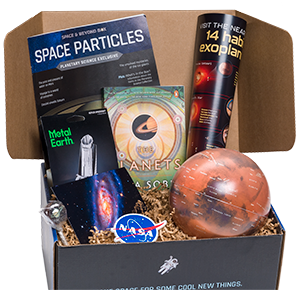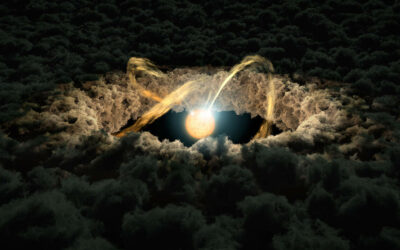The Space & Beyond Blog
9 unusual things researchers launched into space for science
We’ve been launching strange stuff into space since it became possible.
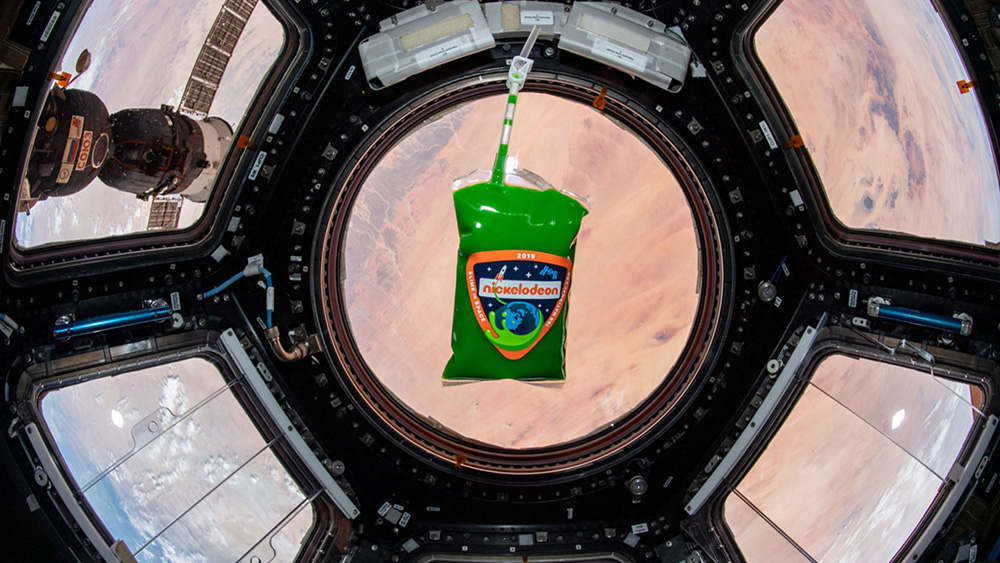
Nickelodeon’s slime floats aboard the International Space Station. Credit: NASA
Humanity has long been fascinated by space. In our quest to expand our understanding of the universe beyond Earth and communicate with extraterrestrial life, we’ve sent a bizarre slew of items and creatures into the final frontier — including music, animals, text messages, pizza, Craigslist ads, human remains and a car, among other things.
1. Slime
Did you know astronauts were slimed in 2020 on the International Space Station? Nickelodeon sent about two liters of their iconic goo to the space station for astronauts to test how a non-Newtonian fluid behaves in the absence of gravity. Their experiments, which doubled as a virtual field trip, included tossing slime-filled balloon and making slime bubbles.
The findings of the experiment could impact how liquids are handled in space and could influence plant watering on the space station, carbon dioxide and wastewater processing, along with life support systems on future deep space missions.
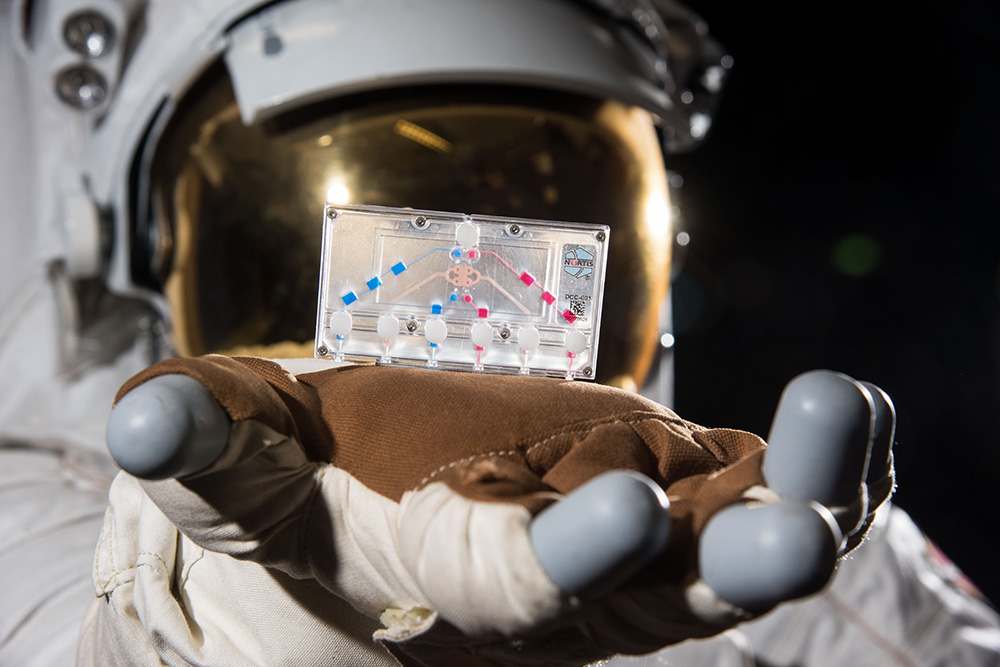
Human cells are held within this small, flexible piece of plastic. Channels and ports inside ensure nutrients and oxygen can reach the cells. Credit: NASA
2. Tissue Chips
Tissue chips are tiny, complex bioengineered devices containing human cells in a 3D matrix that mimic the structure and function of human organ systems, such as the heart, lungs and kidneys. First launched into space in 2018, scientists use tissue chips to study how drugs and diseases affect the human body in space and to understand the long-term impact of microgravity on health.
3. Jellyfish
Scientists have been sending jellyfish into space since the early 90s to test the effects of weightlessness on their development as they mature. The first mission that blasted jellyfish into orbit in 1991 sent over 2,000 jellyfish. By the time the mission ended, over 60,000 jellyfish were living in space! And it turns out that the space jellies had a lot of difficulty trying to swim in normal gravity when they returned to Earth: they were experiencing extreme vertigo.
4. Salmonella
In 2007, researchers from Arizona State University sent a sample of salmonella, one of the most common causes of food poisoning, into space to understand how bacteria reacts to zero-gravity. Frighteningly, the bacteria became even more virulent in space — troubling news for future space colonies.
5. Tardigrades (water bears)
Tardigrades, also known as water bears, are microscopic, nearly indestructible creatures found in many different environments on land or sea. The tiny creatures can survive high levels of radiation, extreme temperatures, nearly an entire decade without water, and exposure to chemicals that are harmful to other forms of life. Since they can live through just about anything, scientists figured they’d see what happens to them in space in 2007. True to their reputation, the tardigrades returned to Earth perfectly healthy, becoming the first animal to survive open space.

This spider spun its web aboard the International Space Station. Credit: NASA
6. Spiders
Golden-orb weaver spiders enclosed in a container with food and light were sent to space to observe how they would orient themselves in a gravity-free environment. The researchers photographed the spiders’ webs every five minutes as overhead lights switched off and on every twelve hours to simulate daylight. They found that gravity is the most important orientation guide for spiders when it comes to web building. When gravity is absent, the spiders used the direction of light as a sort of “back-up system.”
Enjoying our blog?
Check out the Space & Beyond Box: our space-themed subscription box!
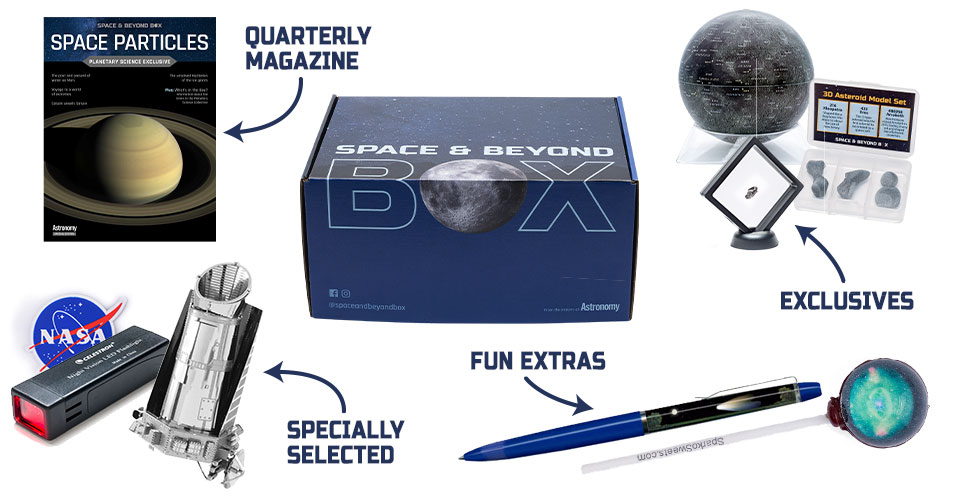
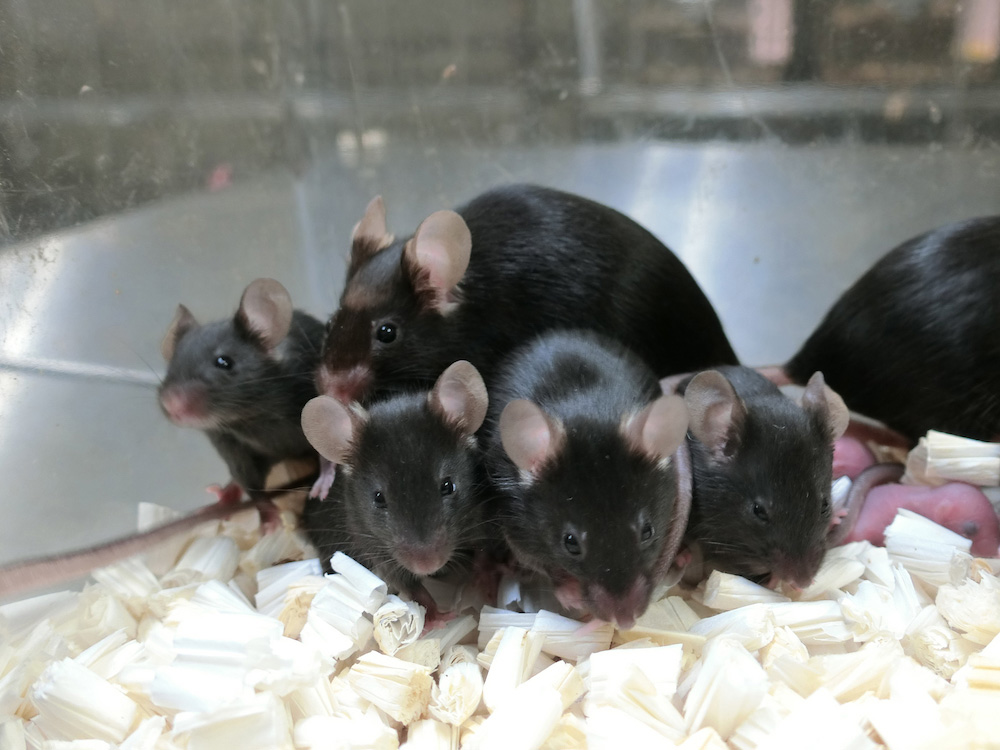
The “space pups” made from freeze-dried sperm flown aboard the International Space Station. Credit: Teruhiko Wakayama, University of Yamanashi
7. Mouse Sperm
A team of scientists launched freeze-dried samples of mouse sperm into space back in 2013, leaving them in storage for over nine months aboard the International Space Station. Space doesn’t have an atmosphere to protect DNA from the sun’s radiation, and when DNA is damaged, it can prevent offspring from coming to term and can cause birth defects and diseases. But that didn’t happen. The freeze-dried sperm returned safely to Earth and led to healthy mice pups after being rehydrated.
8. Medaka
The Japanese rice fish, also referred to as medaka, has transparent skin — perfect for helping researchers investigate the internal effects of microgravity on marine life. Studies indicate that the activation of osteoclasts, a type of cell that breaks down bone tissue, causes the decrease in bone density that astronauts experience in orbit. Through the medaka, a species that’s been used in space studies since 1994, scientists are working to uncover precisely how this mechanism works in hopes of developing a treatment for osteoporosis both in space and on Earth.
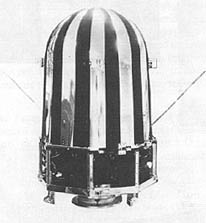
The Orbiting Frog Otolith (OFO) spacecraft Credit: Wikipedia commons
9. Bullfrogs
Ah, yes, the great frog flight of 1970. NASA launched two bullfrogs in their own spacecraft, dubbed the Orbiting Frog Otolith, or OFO 1, to study the impact of space travel on motion sickness. Scientists chose to use bullfrogs because their inner ear is very similar to that of humans. They implanted electrodes into the frogs’ thoracic cavities and vestibular nerves within the ear to record data on the effects of weightlessness. The bullfrogs orbited Earth for six days, and the experiment was successful; the electrodes in their thoracic cavities showed the frogs acclimated just fine, and their vestibular systems returned to normal.
CONNECT WITH US ON INSTAGRAM
CHECK OUT OUR LATEST BLOGS
Tour the inner solar system
Take a deep dive into the rocky planets that make up our local neighborhood.
